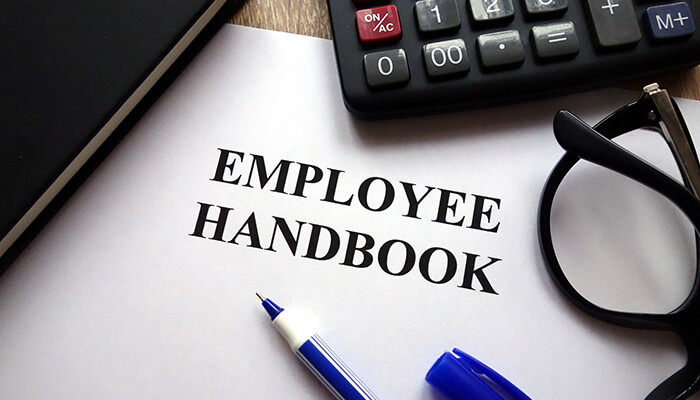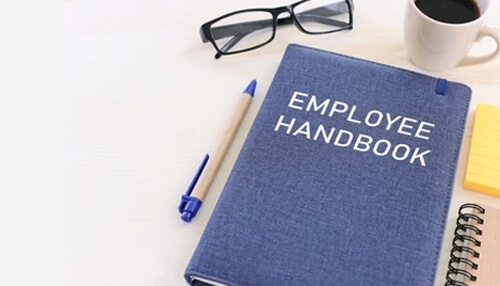What is an effective employee handbook?
An effective employee handbook is mainly to display vital information. A handbook for a good company includes factors bespoke to the company. It includes the core values, vision, culture, history, and benefits for employees.
10 Steps to Create an Effective Employee Handbook for Your Businesses
Step 1- Set standards internally
In the employee handbook drafting world, some handbooks are compliance-based and some integrity-based. The integrity-based handbooks are management-directed, morally oriented, proactive, encouraging, and positive. Employers need to adopt the model of integrity-based for their handbooks for their employees to hold higher standards to applicable laws. The compliance-based handbooks are lawyer-driven, defensive, legalistic, and externally imposed rules. Companies set positive tones and attract workers to succeed.
Step 2- Covers provisions to the employer
Employees reading the handbook learn about the employer provisions they will receive. It makes a positive impression, so the handbook’s first section should list the benefits that employers provide their employees. It should include paid time off, retirement benefits, and insurance, besides their paycheck. It includes the paid time off details such as medical or sick leave, civic duty leave, bereavement leave, etc. Even leaves that are not payable, such as family leave or extended medical leave, and personal or military leave, should be here. Other benefits such as relocation, reimbursement, or employee discounts; everything needs addressing in the handbook.
Step 3– Conduct and communicate expectations and performance
Employees do not like reading the termination section. However, it is not right to keep them in dark. The handbook should have details of termination to know the employer’s expectations. If not, it may affect adversely. Employers using the handbook ensure to outline the work rules, policies, and conduct and communicate to all the employees. They must know their paid time off, expectations, and termination details.
Step 4- Emphasize security and safety
An employee handbook should focus on workplace safety concerns. It is employee-oriented. The message should be loud and clear that employers do not want their employees to get injured at work. The book should mention safety programs, policies covering alcohol and drugs, references to the training and safety committee, workplace security policy, criminal and driving records, workplace chemicals, and matters relating to all to reinforce the overarching concern on the job for safety.
Step 5- Customize the employer’s situation
The handbook policies are common with all industries, but the employer endeavors to customize the handbook. They consider the operations scope, geographic location, employer size, employee expectations, and operating culture. The handbook complies and meets the proper tone with applicable laws.
Step 6- Periodical update
Laws and circumstances keep changing. Employers must update and review the handbooks to adapt to changes. Making updates and incorporating changes in the handbook helps address future situations. They should check the business checklist and ensure the handbook complies with the allocable laws.
Step 7- Write in easy terms
A handbook is a comprehensive manual procedure, and there is no need to get into each detail. The handbook should cover topics that the employer provides and pays for. However, writing in simple language and general terms make the book readable and dynamic. There is no need for brainstorming techniques, so republishing with changes anytime allows the management more discretion.
Step 8 – Organize Headings
A handbook is readable, and employers should use guides. Break long text as it helps employees understand the content. It is easier to use the handbook and find topics as it outlines the orientation process and has valuable content.
Step 9- Employee perks and benefits
Using the employee handbook, providing an overview of perks and benefits means the inclusion of compensations, health insurance, stock offerings, mobile phone reimbursement, company technology, and laptop. Employers must go with the business checklist and specify who is eligible for these benefits and the limitations. List the eligibility criteria and hold specific roles such as reaching milestones and celebrating life events.
Step 10- Include personalized messages
The employers should include welcoming employees, and the handbook should have company history. The new employee should know the company’s history and plans. No need for brainstorming techniques, but highlighting significant acquisitions and portraying the business in a positive light is essential.




